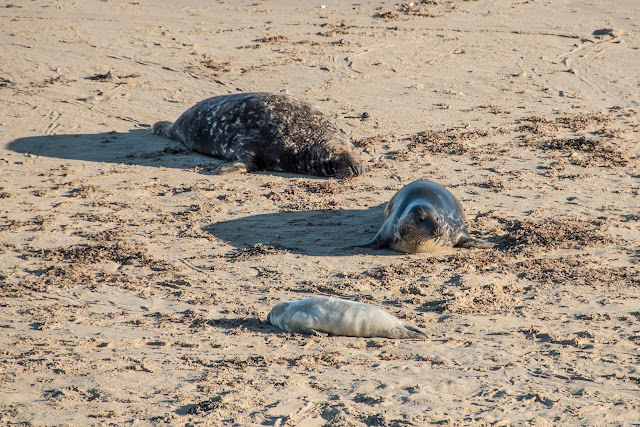Never having had a holiday in the Lake District, this was our destination for May - to the south of Cumbria, in a village called Ulpha, to be precise.
So, on Friday evening about 6pm we were on our way to Days Inn in Peterborough where we where to stop the night thus saving ourselves 2 hours on our Saturday journey onward to the Lakes. At around 8:20 am on Saturday, we started our journey up the A1 toward Scotch Corner where we intended to turn onto the A66 toward Penrith. The idea being that by travelling so far up the A1 and travelling over the top of the Dales, we could miss most of the built up, busy roads like the M6 and arrive in a less tired state. That was the idea, but the drive down through the Lakes NP was another thing!! Perhaps we will do the M6 on the way home after all!
However, all clouds have a silver lining, and we were able to get a few pictures (above) before reaching our destination for the week.
Our cottage for the week. The owner, Vicky, lived next door (on the left). It was perfect - a real homely cottage.
Sunday dawned cloudless and that was perfect as we had decided to do a local walk to Seathwaite Tarn.
The start of the climb. The parking spot was on a road marked as unsuitable for traffic but luckily was reasonable as far as the parking spot anyway. So, photos from the start right to the Tarn, which is dammed (no swearing here please) to provide local water, and a few more on the way down. By the time we were descending, a number of other people were starting their ascent. It seem a popular walk, which at 3 miles and a rise of 263m. is just right for oldies I suppose!
Seathwaite Tarn is a reservoir in an area known as the Furness Fells. Apparently, in order to create a source of drinking water the existing tarn was considerably enlarged with a dam in 1904. During the dam construction some of the navvies rioted damaging buildings in the village, several rioters were shot, one dying the next day. It is so peaceful up there now you would never guess at a violent past.
The journey down with Rosey surveying the scenery.
Back to the start - this tree needed to be photographed!. Opposite the car parking area.
Later that day we walked down to explore the village of Ulpha, first calling in to the church.
Records of a church in the village of date back to the reign of Henry III. Referred to by William Wordsworth in his Sonnets on the Duddon, Ulpha church “is as welcome as a star.”
Built of local stone, the roof of St. John the Baptist chapel is supported by Adze curved beams, open to the rafters. Now that took some craftsmen!
In it’s earlier days, the walls would have bore no plaster, nor the interior any seats. The only service would be mass or communion, much shorter than the services of today, so the congregation would have stood or knelt.
There are several interesting features to the building such as the reason the windows appear low in the walls for the period. It appears that due to work in the last century where the remains of those who had been buried in the chapel were removed, the floor level was subsequently raised. Strange!
Coming across some Almshouses in the village was a bit of a surprise. They appeared to be in the `middle of nowhere`.
They were founded by a bequest of John Gunson of Oak Bank, Ulpha, in memory of his parents Joseph and Eleanor Gunson around the turn of the 20 century. However, they are still going strong and even have their own Facebook page!






























































